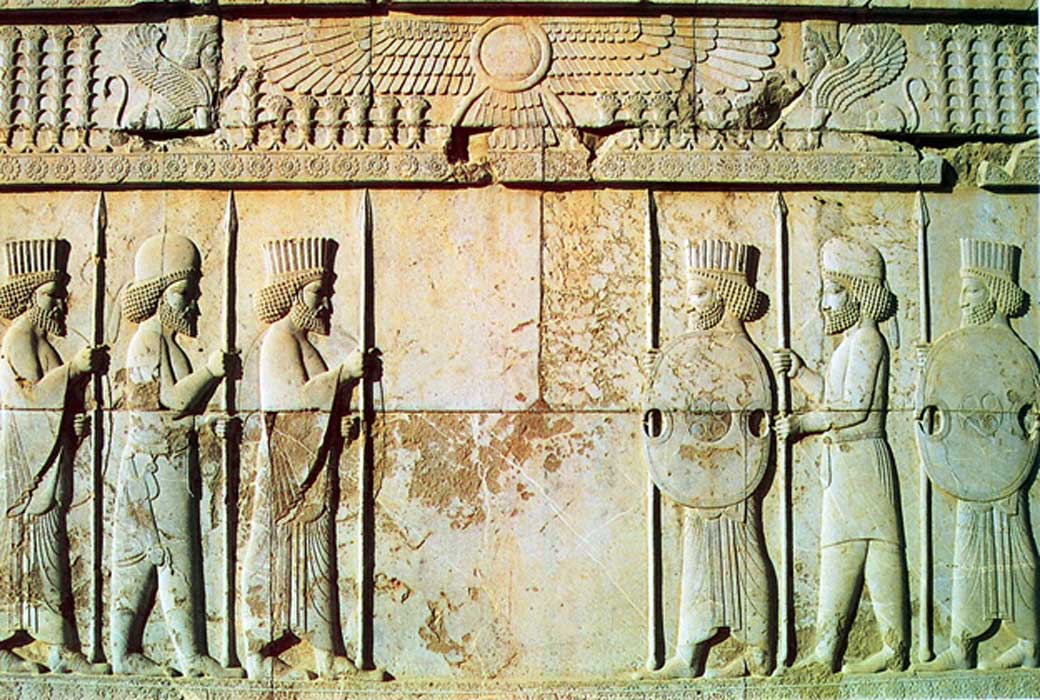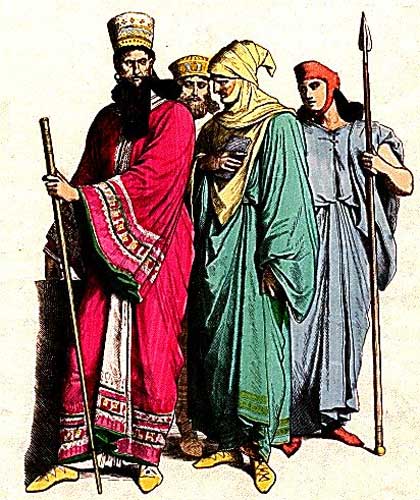
Kings of the Umman Manda (Media): Their Hidden Origins and History – Part I
The term Medes, as a single ethnic group that encompasses all Media, is generic. It seems that the region of Media encompassed many smaller and independent principalities ruled by chieftains instead of kings, and was a makeup of various peoples of different ethnic backgrounds.
As for the Median region, the extent of its boundaries towards the east is unknown. The Median territory did border the Zagros Mountains to the west and the Caucasus to the north, while its southern neighbor was Ellipi.
The Assyrians and Babylonians called them Madayu, the Persians called them Mada, and the Greeks called them Medes. In addition, the Assyrians and Babylonians also equate the Medes with the Umman-manda in the Fall of Nineveh Chronicle. The meaning of Umman-manda could be “Manda-host” or “host of the Manda.” It has also been suggested that Umman-manda could mean “Who Knows,” “Barbarous people,” or “Nomads;” one could say a mixed multitude of uncivilized people from the north.
The term Umman-manda has been subject to change with the regional people that mentioned them. Take for instance the name Tidal or Tudkhul. Tidal/Tudkhul is said to be the king of the Hittites but is also called king of the Umman-manda or “Nations of the North.” Consider also, a much older event in which Naram-Sin, king of the Akkadian empire, defeated the Umman-manda and he states, “the powers of the Umman-manda are struck down.”

Medes and Persians at the eastern stairs of the Apadana in Persepolis, Iran. (CC BY-SA 3.0)
From the time the Umman-manda was mentioned by Naram-Sin up to the time of Nabopolassar, over 1500 years had elapsed between events. This suggests that the term Umman-manda is generic and does not identify one particular people but rather a horde of many tribes with various names. These tribes resembled more of a fractured federation rather than an invading army looking to expand their empire. In addition, consider the term Umman-manda was just a Mesopotamian stereotype when referring to people not native to the civilized powers in the region. The Umman-manda of Narma-Sin and the Umman-manda of Nabopolassar were two different hordes that most likely had no relationship to each other.
King Cyaxares and his Possible Ancestral Origins
In old Iranian/Persian, Cyaxares’ name is “Hvakhshathra” or “Uaksatar,” as well as “Uksatar,” which is interesting, for if Cyaxares was a Mede, then why is his name in Old Iranian/Persian Hvakhshathra? Hvakh is most likely a rendering of the Old Iranian name Hakha, which is a variation of the Sanskrit word Sakha; both Sakha and Hakha mean Saka, and Saka is another name for a nomadic tribe. Now shathra, or hathra, seems to be derived from the word satra in Sanskrit, which means “together, collectively united, and dominion.” In addition, Hathra in Parthian means “city or country.” Also, consider that shathra/hathra could also be a rendering of the Persian word “shah,” which means king. Now if we look at the other renderings of Cyaxares’ name – like Uksatar and Uaksatar – notice that his name carries the word “satar,” which also seems to be a rendering of the word “satra.” Therefore, it is plausible that Cyaxares was of Saka/Scythian stock due to his name but it remains uncertain.
- The Possible Origins of the Early Persian Kings: Mystery Men - Part I
- The Possible Origins of the Early Persian Kings: Inscriptions Reveal a Pattern - Part II
- Did Darius Hijack the Persian Throne? Ancient Coup and the Rise of Darius the Great – Part I
What is about to be presented fixes the issue but adds another piece to the puzzle to consider. Before the name of Cyaxares is mentioned in historical record, there was a man by the name of Sandakkurru/Sandaksatru. Sandakkurru/Sandaksatru was the son of Dugdammi. Dugdammi was not only king of the Sacae or Scythians, but also of the Guti – and the term Guti was applied to the region of Media. Now because of this, Dugdammi’s title suggests that he was king of the Saka (Scythians) and the Guti. If one takes it fully into account, then the fact that the very title Dugdammi is addressed by could suggest that he was king over a vast number of Scythians/Cimmerians including those not of the same ethnic group, and that his home was in Guti (Media).





